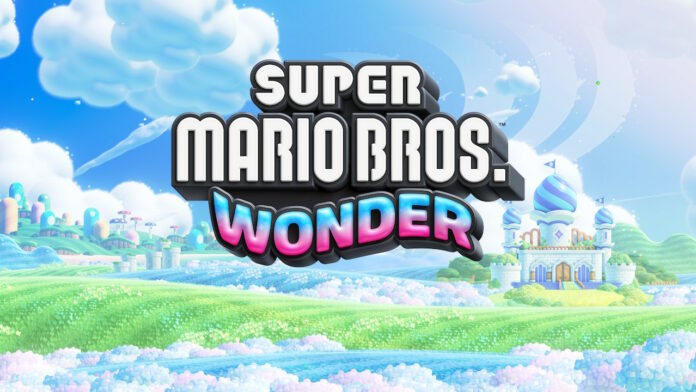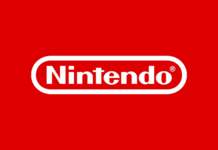The style of the ‘New’ Super Mario Bros. games has been the standard for classic 2D Mario for almost 20 years now. Back on the Nintendo DS and Wii, it felt fresh and exciting, but as time has gone on, the series has gotten, admittedly, more and more stale. New Super Mario Bros. U Deluxe on Nintendo Switch isn’t a bad game by any stretch of the imagination, but considering it’s a port of a 2012 Wii U game, and until now, was the only 2D Mario game on Switch besides Super Mario Maker 2, it’s understandable why fans have been clamoring for a series entry that feels entirely unique. Fortunately, there is a saving grace… and that’s where Super Mario Bros. Wonder comes in.
When Super Mario Bros. Wonder was formally announced in the June 2023 Nintendo Direct presentation, the majority of reactions from across the internet were overwhelmingly positive. Even at first glance, it really seemed as though Nintendo was finally answering our prayers by developing a Mario side-scrolling platformer that breaks the status quo. Not only did the reveal trailer show that the game would feature a brand new art style with more lively animations, we were also introduced to an entirely new world, the Flower Kingdom, which appeared filled to the brim with exciting new enemies, power-ups, and mechanics; a breath of fresh air for the series.
A new era of Super Mario Bros. is upon us, and as marketing for Wonder began, with more trailers and information being released, excitement and anticipation only continued to grow. However, there was one piece of unexpected news that came across as kind of bitter-sweet. Starting with Super Mario Bros. Wonder, the voice actor for Mario himself, Charles Martinet, would no longer be reprising his role. Martinet has given life to these beloved characters for decades, so hearing that he would be stepping down was a difficult pill to swallow for many, especially since no reason was given for the departure. Going forward, Martinet will be taking on the role of “Mario Ambassador” for Nintendo, with no word yet on who his replacement is.
Super Mario Bros. Wonder has a total of 12 playable characters; the biggest roster in a mainline Mario game to date. Mario, Luigi, Peach, Daisy, Yellow Toad, Blue Toad, and Toadette all control exactly the same, whereas Yoshi, Red Yoshi, Yellow Yoshi, Light-Blue Yoshi, and Nabbit basically function as easy mode, as they don’t take damage and are unable to use power-ups. At the start of the game, Mario and friends visit the Flower Kingdom after receiving an invitation from Prince Florian. Unfortunately for them, King Bowser swoops in about as soon as they arrive, stealing the kingdom’s Wonder Flower and merging with their Flower Castle, becoming a seemingly unstoppable force. Of course, the courageous and heroic Mushroom Kingdom residents (as well as Princess Daisy of Sarasaland) offer Prince Florian their help to stop the fittingly named Castle Bowser from taking control, and your wondrous new adventure begins.
The Flower Kingdom consists of six worlds surrounding the Petal Isles, making for seven different areas to explore. Much like other Super Mario Bros. games, you traverse from level to level using an interactive overworld map. In some areas, you’re given the freedom to choose which course you want to play first, with each one conveniently ranked by how difficult it’s going to be using a star rating system. There are alternate paths and even hidden courses to find as well. Alongside the main courses, there are also ‘Break Times’ and ‘Badge Challenges’ sprinkled throughout the overworld. Break Times are exactly as they sound; easy, short but sweet mini-levels designed to be a break from the more difficult courses. Badge Challenges on the other hand, as the title suggests, are a bit more challenging, teaching you the ropes of the various badge abilities, a new mechanic that you can equip for use at the start of every course.
Using different badges is a great way to change up the gameplay and keep things always feeling fresh. Badges are split into three separate categories; Action Badges, Boost Badges, and Expert Badges, all with a different function. Only one badge can be used at a time, with some being more useful than others on particular courses. The first badge you’re introduced to in an Action Badge, the Parachute Cap, which allows you to glide through the air using a hat as a parachute. Other badges include a coin magnet, invisibility, auto super mushroom, dolphin kick, and even a grappling vine. There is so much to discover!

Wonder Seeds are the main collectables required to progress through the game. You can earn yourself a Wonder Seed simply by completing a course, but you can also get an extra one by finding a Wonder Flower. Upon touching a Wonder Flower, the world around you will change in various weird and wacky ways, staying that way until you get to the Wonder Seed at the end of the section. There are also hidden purple 10-Coins to find in courses, as well as plenty of purple Flower Coins that can be used at Poplin Shops (Poplins are kind of like the Toads of the Flower Kingdom) in the overworld to buy things like badges, an extra Wonder Seed, or some 1-Ups. The standard gold coins serve the same purpose as always; collect 100 for an extra life.
As with every Super Mario Bros. game, the iconic Super Mushroom and Fire Flower makes their expected return, but Super Mario Bros. Wonder also introduces a handful of other power-ups. Most notably of the bunch is the Elephant Fruit, which transforms your character into an elephant version of themselves. While in elephant form, you can attack enemies and break blocks from the side, as well as collect and spray water from your trunk. Other new power-ups include the Bubble Flower, allowing you to blow bubbles that doubles as both a weapon and a platform, and the Drill Mushroom, granting you the ability to drill underground or into the ceiling. If you collect a power-up while one is in use, it will automatically be put into a reserve.
Unlike other games in the series, notably New Super Mario Bros. Wii, there is no character collision when playing local multiplayer (2-4 players). Each player is layered behind one another, meaning gone are the days of jumping on your friend’s heads and throwing each other into bottomless pits out of a fit of rage. This makes the overall experience feel much less chaotic, and although some may find it disappointing, it makes a lot of sense considering that some courses would likely be virtually impossible otherwise. For those with a Nintendo Switch Online membership, you can even take the fun online by playing courses together casually or competitively racing to the flagpole. Online players (known as “live player shadows”) appear as slightly transparent, and have their own set of enemies, blocks, and power-ups to independently interact with. The online features in Super Mario Bros. Wonder are surprisingly robust, and when you’re unable to gather friends for a private lobby, the ability to play and interact with strangers from around the world makes playing by yourself feel a lot less lonely.
As far as first impressions go, Super Mario Bros. Wonder is without-a-doubt revolutionary, and could very well be one of the best 2D Mario games yet. If the entire game ends up being as good as what I have played so far, it may even end up overtaking Donkey Kong Country: Tropical Freeze as my favorite Nintendo platformer of all time. If you’ve been wondering whether or not you should pre-order, I think it’s safe to say that you absolutely should, but you should also make sure to keep an eye out for our final review before Super Mario Bros. Wonder launches for Nintendo Switch on 20 October 2023.
A copy of Super Mario Bros. Wonder for preview purposes was provided by Nintendo UK.
Related
mynintendonews.com







